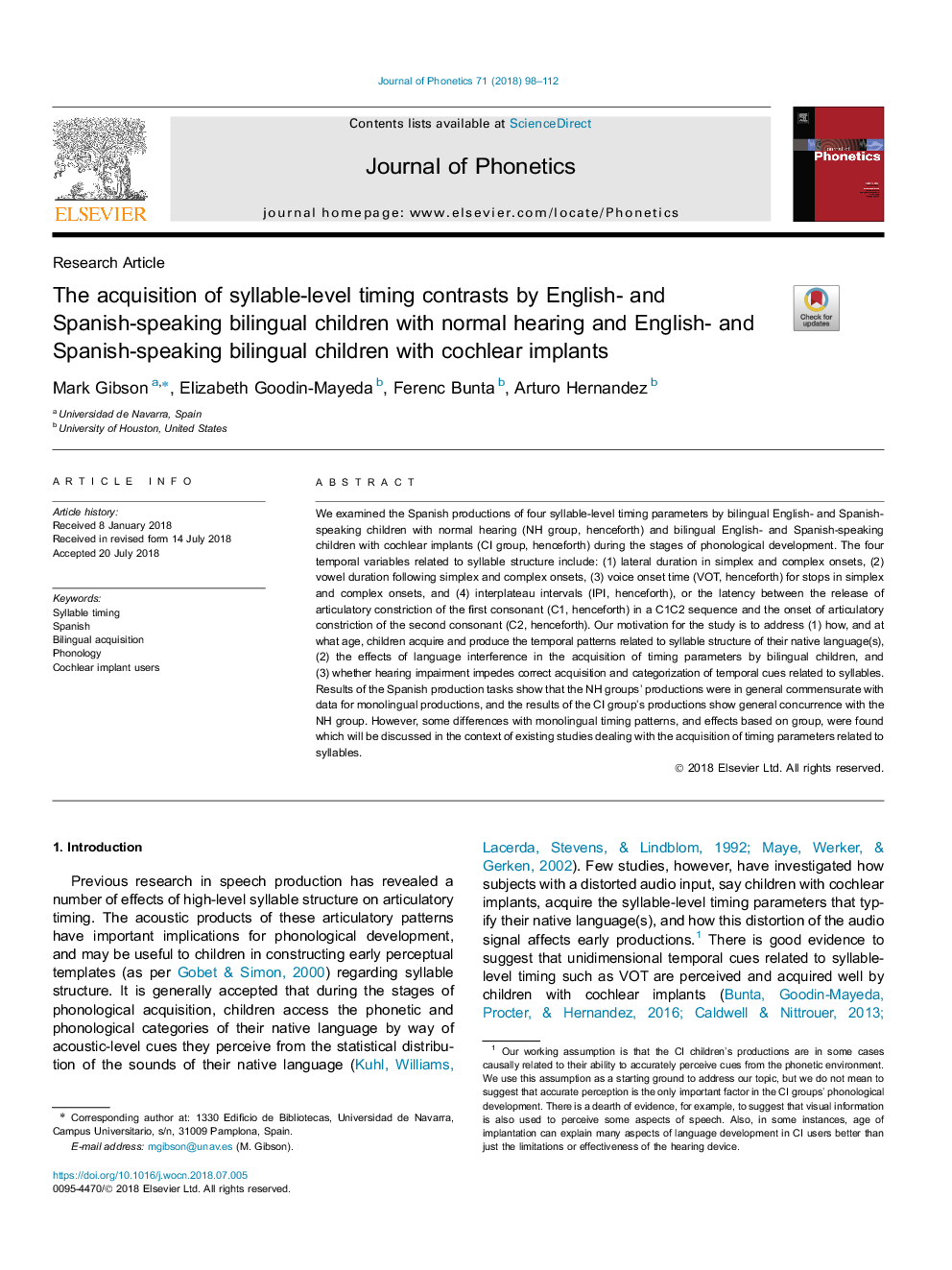| Article ID | Journal | Published Year | Pages | File Type |
|---|---|---|---|---|
| 9953293 | Journal of Phonetics | 2018 | 15 Pages |
Abstract
We examined the Spanish productions of four syllable-level timing parameters by bilingual English- and Spanish-speaking children with normal hearing (NH group, henceforth) and bilingual English- and Spanish-speaking children with cochlear implants (CI group, henceforth) during the stages of phonological development. The four temporal variables related to syllable structure include: (1) lateral duration in simplex and complex onsets, (2) vowel duration following simplex and complex onsets, (3) voice onset time (VOT, henceforth) for stops in simplex and complex onsets, and (4) interplateau intervals (IPI, henceforth), or the latency between the release of articulatory constriction of the first consonant (C1, henceforth) in a C1C2 sequence and the onset of articulatory constriction of the second consonant (C2, henceforth). Our motivation for the study is to address (1) how, and at what age, children acquire and produce the temporal patterns related to syllable structure of their native language(s), (2) the effects of language interference in the acquisition of timing parameters by bilingual children, and (3) whether hearing impairment impedes correct acquisition and categorization of temporal cues related to syllables. Results of the Spanish production tasks show that the NH groups' productions were in general commensurate with data for monolingual productions, and the results of the CI group's productions show general concurrence with the NH group. However, some differences with monolingual timing patterns, and effects based on group, were found which will be discussed in the context of existing studies dealing with the acquisition of timing parameters related to syllables.
Related Topics
Social Sciences and Humanities
Arts and Humanities
Language and Linguistics
Authors
Mark Gibson, Ferenc Bunta, Elizabeth Goodin-Mayeda, Arturo Hernandez,
